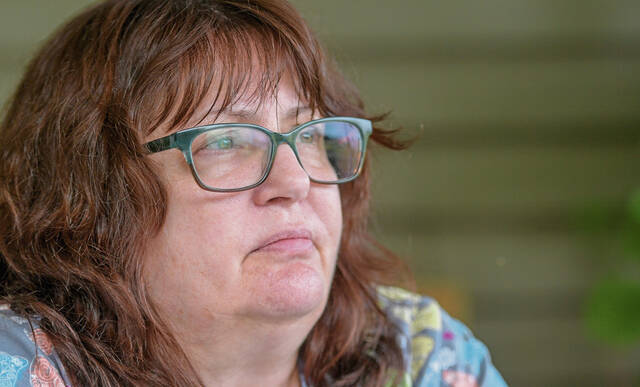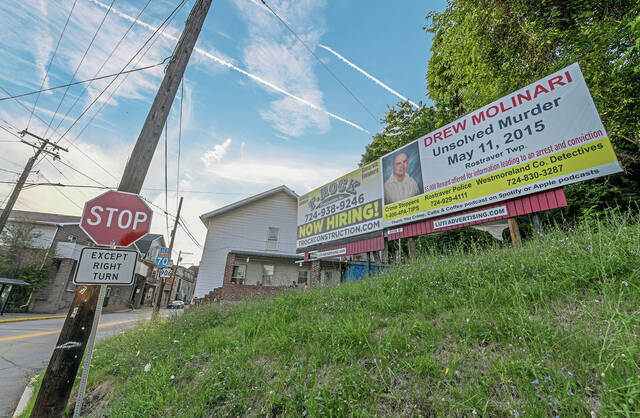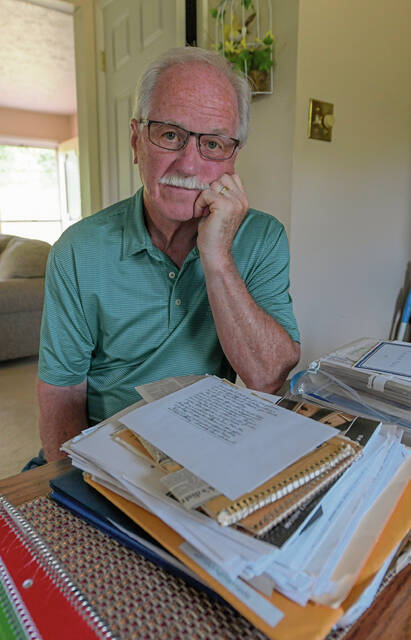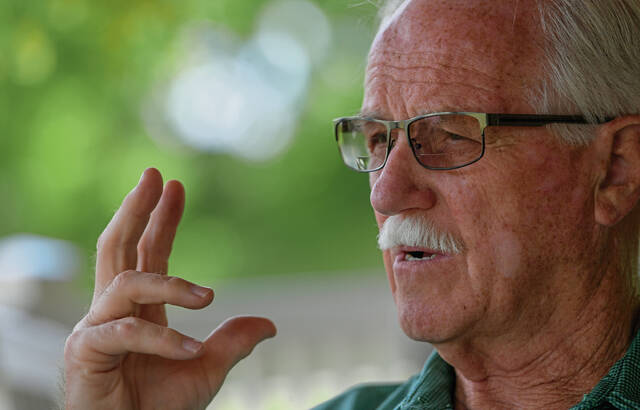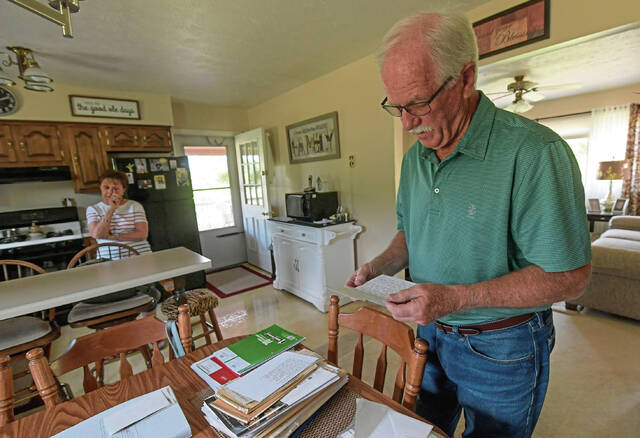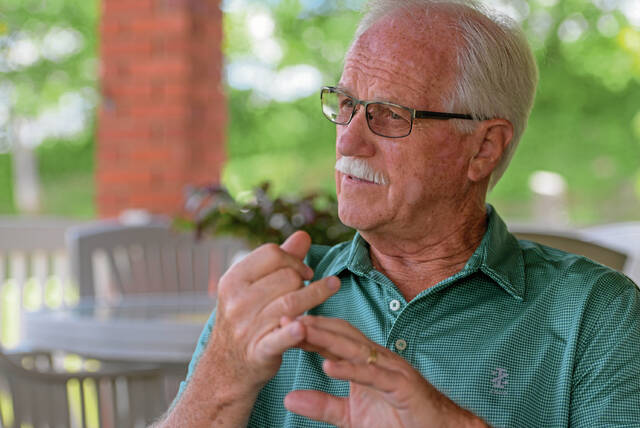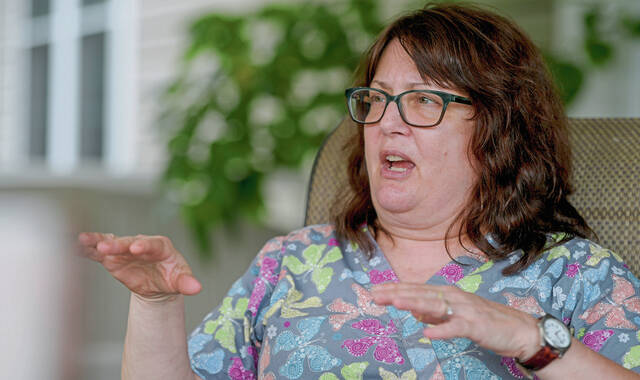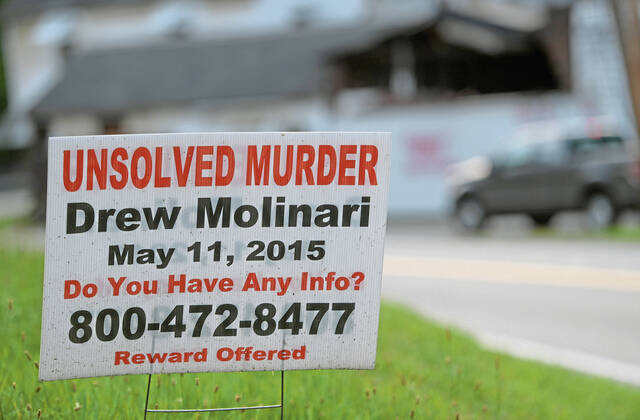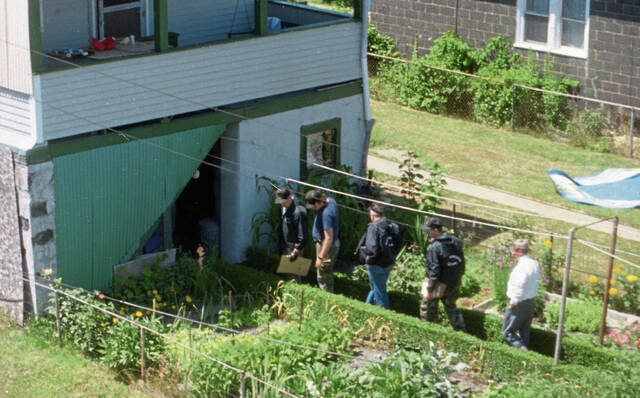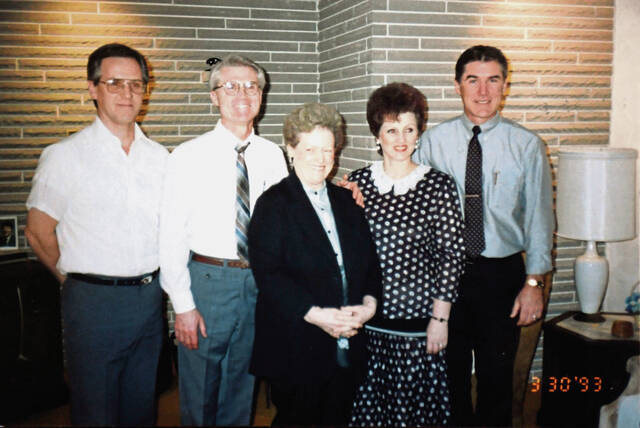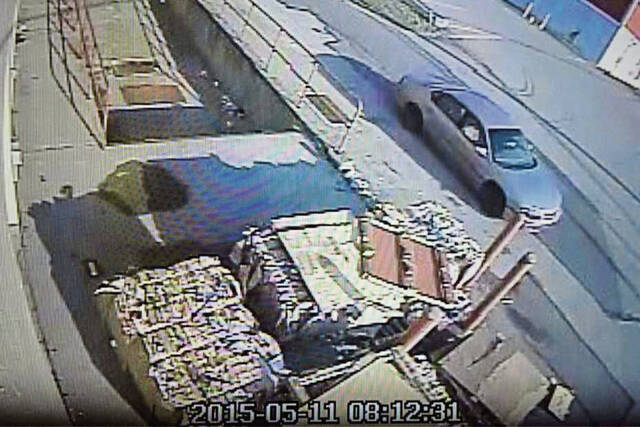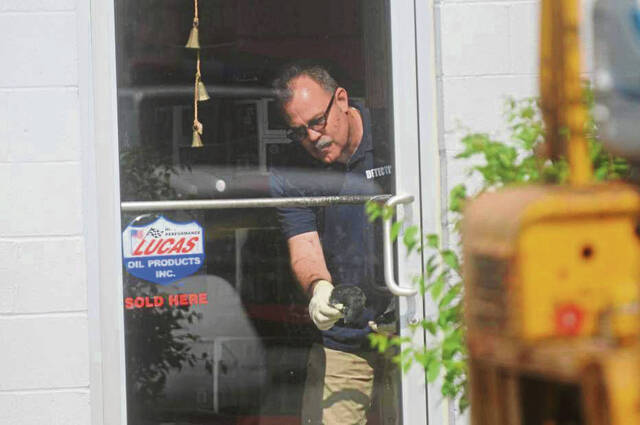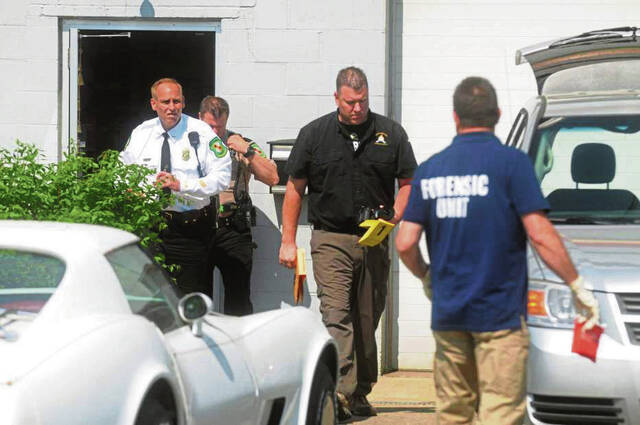Unending anguish: Myriad reasons exist why homicide cases go unsolved, but family and police remain resolute
Dawn Dutchko expected her son’s killer would be in handcuffs in no time.
“We really thought, ‘OK, it’s Belle Vernon. Everybody knows everybody,’ ” she said. “We figured it would get solved quickly.”
But days turned into weeks, and the chances of an arrest seemingly evaporated.
Drew Molinari, 34, was fatally shot May 11, 2015, at the Rostraver auto parts shop where he worked. Investigators described it as a targeted killing by a man wearing a hooded sweatshirt who fired multiple shots inside the business shortly after it opened at 8 a.m. that Monday.
Two years later, police released surveillance images and video of the suspect who ran from Minniti Motorsports to a Chevrolet Impala in the busy Tri-County Shopping Plaza off Route 201 near Interstate 70.
Families around the region can relate to Dutchko’s pain — their loved one’s killer or killers have managed to stay just beyond the law’s reach. The homicide cases remain unsolved and rewards for information unclaimed, sometimes for decades, leaving families without answers or justice.
Nationwide, about half of all homicides in 2020 were considered cleared, which can mean a suspect was arrested or identified but unable to be arrested because of other circumstances, such as death, according to FBI data. It was a significant drop from 1965 when about 83% of homicides were cleared.
Police in Pennsylvania saw similar statistics for those two years with about 76% of all homicides being cleared between 1965 and 2020.
Westmoreland County’s clearance rate for homicides was slightly better for that time frame at 81%. Allegheny’s was much lower at 72%.
Dutchko, of Washington Township, Fayette County, is hopeful that a new regime in the Westmoreland County District Attorney’s office will push the case forward. In the meantime, her oldest son is never far from her thoughts.
“It’s nuts. We have to watch his friends getting married and having kids and moving on,” Dutchko said. “There’s no moving on for Drew.”
‘You have to be patient’
There can be a variety of reasons a homicide case remains unsolved or turns cold.
Vernon Geberth, a retired New York City police homicide detective, said reasons can include the inability to identify a victim, not being able to find a body, the location of the killing, lack of physical evidence and uncooperative witnesses or no witnesses at all.
“If you don’t have something in the first 72 hours … that’s a bad sign,” said Geberth, who has authored books on homicide investigation and works as a consultant. “That was my barometer.”
Two retired Pennsylvania State Police investigators who worked on cold cases in the eastern part of the state said it is important to return regularly to the same witnesses.
“We know time often might change what somebody’s willing to tell us,” said Tom McAndrew, president of the Pennsylvania Homicide Investigators Association. “There’s many cases you know who did it but you just can’t get that additional piece of evidence to be able to make an arrest.”
Other roadblocks can include time and money, said Shawn Williams, vice president of the association. Investigators have to balance old cases with new ones, and sometimes funding can be a hurdle in testing of evidence. The association provides grants to police agencies that have exhausted other financial means.
Advances in DNA and forensic technology and testing, such as genetic genealogy and familial DNA, have helped police identify suspects in recent years. Offenders of certain crimes are required to submit their DNA into a national database, which can aid in solving crimes.
“Time doesn’t help every case, but sometimes it does,” Williams said.
Technology recently helped police in Lancaster County make an arrest in a 46-year-old homicide case. Authorities submitted DNA evidence found on the 19-year-old female victim’s underwear and, in the last few years, gleaned details about the suspected killer’s genetic genealogy and physical characteristics.
Police said they surreptitiously got a sample of the suspect’s DNA from a coffee cup and identified him as a match, arresting him earlier this month.
“With the advent of some of the technology, it’s been amazing,” Geberth said.
Experts agreed that there isn’t a specific length of time that must pass before an unsolved homicide case is considered cold. Rather, it’s the dearth of new leads that ultimately makes the case cold. Cases that remain unsolved can still be considered active investigations, despite years that may have elapsed.
North Huntingdon Police Chief Rob Rizzo said authorities are still actively looking into the death of chiropractor David Bailey, 54, whose body was found in his office 30 minutes before it was scheduled to open on Nov. 29, 2019. Police have not said how Bailey died.
Such investigations take a lot of collaboration between municipal departments and county detectives, and while it is frustrating for family members to not have answers, the unsolved crimes wear on the minds of investigators, too, Rizzo said.
“Sometimes you have to be patient with these cases,” he said. “You have to get it right.”
Westmoreland County Chief Detective Ronald Zona said thoughts about the cases can sometimes bleed over into an investigator’s personal life. But when that break comes, “you feel good because you’re making a positive impact for the victim’s family,” he said.
Longtime prosecutor John Peck said frustration often leads to the victim’s family blaming investigators. He had served as Westmoreland’s district attorney since 1997 before being ousted by Nicole Ziccarelli, who said she has gotten up to speed on several unsolved homicides since taking office this year.
“You feel like you’re not fulfilling your responsibility to the job” by not being able to make an arrest, Peck said. “These cases just don’t go away.”
Ziccarelli and Carol Polo renewed pleas for information earlier this year in the March 27, 2007, death of Polo’s 22-year-old daughter Samantha Lang at her father’s home on Route 982 near the Derry Township village known as Peanut. Lang’s throat had been slit, and she was found about 9 p.m. in a pool of blood between the kitchen and living room in the ransacked home. Lang lived there with her brother and their father, both of whom were incarcerated on unrelated charges at the time.
“There’s always the chance of solving these cases,” Geberth said.
Dan and Barbara Coyle continue to hope so.
Stephanie Coyle, 74, was killed in her Arnold home 29 years ago, and her son and his wife have not stopped searching for answers. Her body was found in her tucked-away apartment along an alley behind Fourth Avenue. Police said her throat had been cut and she had been raped and molested after her death. A design was carved into her back.
The couple from Buffalo Township, Butler County, contacted the television show “Unsolved Mysteries” and hired a private detective.
“I’ll never let anybody forget about it — I don’t care if it’s 50 years,” Dan Coyle said.
He expected a quick arrest after the stunning phone call with news of his mother’s homicide during a work golf outing on July 16, 1993.
“Of course, you figure a few more days, you’ll find this guy real quick,” he said. “You just expected them to call you and say they got the person.”
Some of the posters family members put up a few years ago looking for information remain on utility poles around town.
“I still drive through Arnold every once in a while,” Dan Coyle said. “I don’t know why.”
The Coyles and Dutchko expressed frustration with their respective cases and working with police and prosecutors.
“What’s so upsetting is the investigation and how we’re treated that bugs me more,” Dan Coyle said.
Ziccarelli said addressing the county’s unsolved homicides is a priority. Investigators have been making progress in a few cases, she said, but she understands the heartbreak for many loved ones.
“When I talk to some of these family members … they’ve never been able to have peace,” she said.
It is important to limit information released about unsolved homicide cases, which she knows can prompt frustration, but sometimes “extreme patience” is needed while pieces of the puzzle come together.
“You have to make sure you have what it takes to prosecute these cases,” Ziccarelli said.
‘I’m still hopeful’
Dutchko hopes that Ziccarelli’s eyes will eventually land on her son’s case.
She also doesn’t want to take time away from others also waiting on arrests, including Kathe and Harry Gross, parents of Cassandra Gross of Unity who disappeared in April 2018 at age 51, and John and Karen Godfrey, whose daughter Kelly Nicole Godfrey Smith, 27, was found dead June 14, 2007, in the Allegheny River in Lower Burrell. Both cases are being investigated as homicides.
“I’m hopeful that she’ll get down to Drew,” Dutchko said.
Molinari liked to shoot pool and ride motorcycles. At the time of his death, he was living with his grandmother, who dropped him off at work that day. Dutchko wants police to talk to some of the key players again. She’s doing her part by keeping up a billboard about 2 miles from the shooting scene seeking information about Molinari’s death. It was donated by Crime, Cults and Coffee podcast.
“There’s not a day that I don’t think about it,” she said. “I’m still hopeful they’ll figure it all out and solve it. I’m hoping it’s in my mother’s lifetime.”
Renatta Signorini is a TribLive reporter covering breaking news, crime, courts and Jeannette. She has been working at the Trib since 2005. She can be reached at rsignorini@triblive.com.
Remove the ads from your TribLIVE reading experience but still support the journalists who create the content with TribLIVE Ad-Free.


